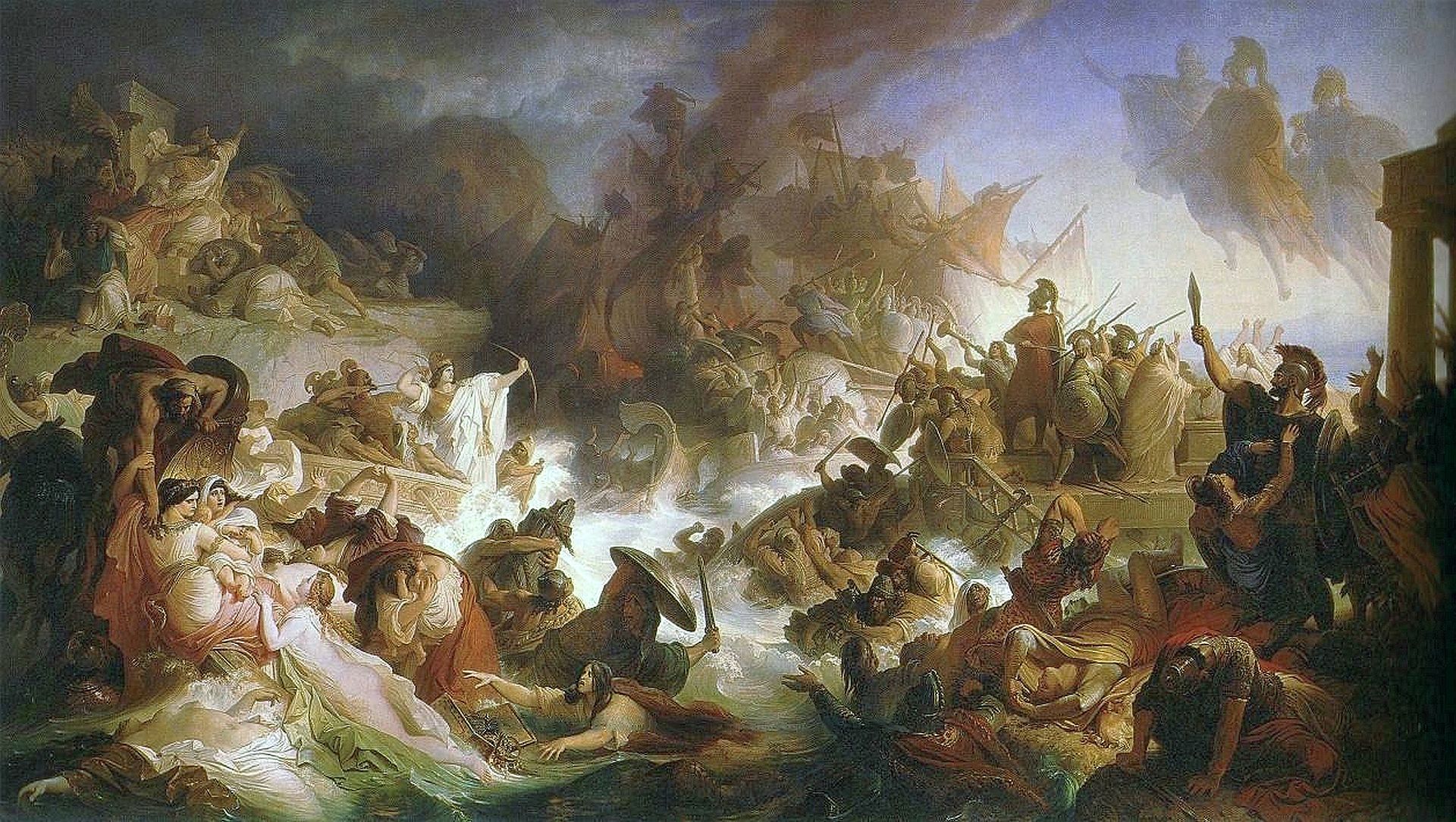On 29 September 480 BCE, the Battle of Salamis was fought between the Greek city-states – who were seeking an empire of their own – and the already established undisputed heavyweight champion of the known world – who needs no introduction – the Persian Empire! Better known as the Achaemenid Empire in the academic world in case you were wondering and I think you are?
According to that guy named Herodotus, who is still being debated about before the undergraduate academic committee, mentions that 371–378 Greek and 900-1207 Persian ships took part in this mass royal rumble. Themistocles, that political populist over achiever, was an Athenian admiral of the navy. He decided to bamboozle the Persians into thinking they were best buds and the Persians were hooked. Afterwards, he ordered his slave to go to the Persians and tell them that the Greek allies had abandoned their position with their tail between their legs. The Persians were giddy and entered the straits between Salamis and the mainland.
On the morning of 29 September, the Persians crept across the narrow strait. Xerxes, being the great leader he was, watched from afar, like a guy in the back of a Grindhouse theater on 42nd Street in New York City. Understand that naval warfare before this shindig took place consisted of boats ramming into each other at high speeds like a bumper boat competition at the local fair that came around once a year or at the established rundown Fun Parks. It was nothing more than an ancient version of demolition derby that goes bound the barnyard rules of rural America. Once a boat had been successfully penetrated, the process of drowning took place, of course, some likely knew how to swim but that’s another matter for another story. Once nightfall arrived, the Persians lost a third of their bumper boats during the competition and called it quits. Persia’s strategic position had not improved, causing Xerxes to pullout and recall his army, which had reached the Isthmus.
While not a major defeat, it was a setback, one that caused Xerxes many countless nights contemplating and boasting of the should’ve, would’ve, and could’ve scenarios. It was another victory for the Greeks in their march to be more like Persia.
Let’s take a look at those Lecture Hall Totals:
We have 371-378 Greek Allied ships (shame on you Herodotus, you need to work on your arithmetic skills) 900-1207 Persian ships according to the ancients who tend to exaggerate a bit. Modern egghead estimates are still being hammered away day in night and tend to suggest only 300-600 ships took place in the beating.
We have 40 Greeks ships totaled.
We have 200-300 Persians ships totaled.
Body count unknown.
Unknown amounts of blood.
Unknowable amounts of severed limbs.
Chick commanding five Persian vessels (Give a round of applause to Artemisia I of Caria).
No breasts.
No beasts.
Heads roll.
Arms roll.
All action.
Ship slamming fu.
Boarding party fu.
Bodies floating (Thinking of you, Ariabignes) fu.
Swords, daggers, arrows, and splintered pieces of wood to the torso fu.
Two and a half beers!
Cam Rea says check it out.
For more on the story, check out these sources:
Herodotus and the Persian Wars
Ephorus, Universal History
Lazenby, JF. The Defence of Greece 490–479 BC.
Green, Peter. The Year of Salamis, 480–479 B.C.
Burn, A.R., “Persia and the Greeks” in The Cambridge History of Iran, Volume 2: The Median and Achaemenid Periods, Ilya Gershevitch, ed.
Thucydides, History of the Peloponnesian War
300: Rise of an Empire 9film) in case you didn’t already know!
By Cam Rea

